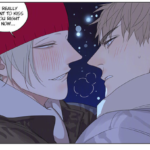 Writers: Kieron Gillen, Jim Rossignol
Writers: Kieron Gillen, Jim Rossignol
Artist: Jeff Stokely
Colorist: Tamra Bonvillain
Letterer: Clayton Cowles
Cover Artist: Jeff Stokely
Editor: Chrissy Williams
Publisher: Image Comics
Imagine a world inhabited by your most ridiculous ideas. Every childhood fantasy. Every discarded daydream. Every brainstormed brainchild. An ecosystem of rampant spontaneity and wild creativity.
Add some panels and a pinch of vulgarity, and you are imagining something close to The Ludocrats #1.
The Ludocrats is a kaleidoscopic fairy tale filled with hyperbolic characters, which makes for a unique reading experience. Reading The Ludocrats is like listening to Iron Butterfly’s “In-A-Gadda-Da-Vida” inside a circus tent. Or like watching a Terry Gilliam-directed adaptation of a Damien Hirst exhibit. The Ludocrats is Brian K. Vaughan’s Saga if Saga adopted the tone of a Kevin Smith stand-up special. In short, writers Kieron Gillen and Jim Rossignol are dedicated to the weird and the wondrous.
Quirkiness seems to be the goal of both the writers and the characters. Gillen and Rossignol do not waste space: every panel contains a bizarre bit or a wild character like Thrax Oblivious, a “sentient bag of wheat.” Many panels have both. For example, one page features the antics of Doctor X-Position, a mustachioed man who offers unsolicited narrations of the comic’s events. The comic’s main characters are Baron Otto Von Subertan (imagine a naughty Teddy Roosevelt) and Professor Hades Zero-K (imagine a blend of Professor Minerva McGonagall, Neil Patrick Harris’s Dr. Horrible, and the mom from 2007’s Meet the Robinsons).
Because of this, some readers will think The Ludocrats is juvenile (which it often is), and others will dismiss it as a joke (which it often tries to be). But despite its almost overwhelming silliness, The Ludocrats is more surreal than absurd because, despite their general nonsense, Otto, Hades, and the other Ludocrats believe in one universal truth: being ludicrous is the only thing of value.
Intriguingly, this initial issue of The Ludocrats introduces a possible threat to the Ludocrats’ way of life. Otto and Hades are hosting a wedding, but the notable absence of the Hyper-Pope causes a disruption. Chaos ensues, and ridiculousness prevails — or does it?
The smooth artwork (Jeff Stokely), glossy pastel coloring (Tamra Bonvillain), and bold text (Clayton Cowles) make the untamed dreams of Kieron Gillen and Jim Rossignol look strangely welcoming, like a wayward Pokémon universe. Those who appreciate the look of edgy fairy tales like Skottie Young’s I Hate Fairyland will appreciate The Ludocrats.
So if you like stories that feel like a 1990s Jim Carrey acting out Hieronymus Bosch’s fever dream, you will enjoy The Ludocrats. It has violence, fourth wall breaks, and a character named Voldigan the Perfidious. If nothing else, comics like these help us appreciate the silliness of life and the value of spontaneity. For those reasons, I recommend it.
Fittingly, The Ludocrats #1 comes out on April Fools’ Day.




